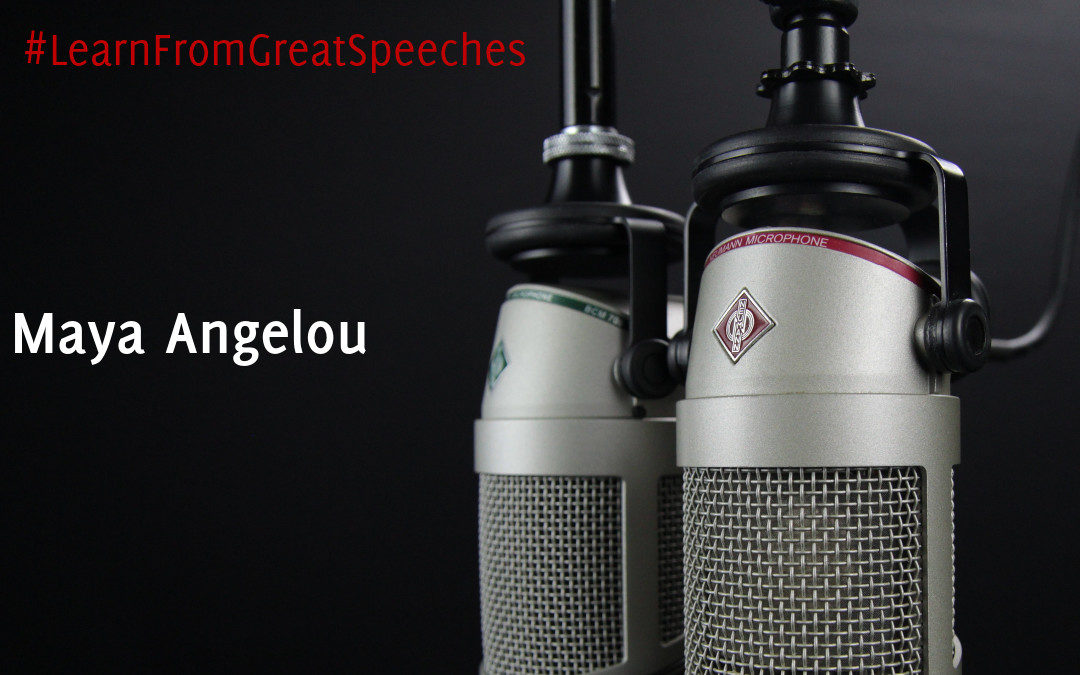#LearnFromGreatSpeeches hosts Maya Angelou, a great American poet. This is her eulogy at the funeral of Coretta Scott King, a great civil rights activist.
Opening
The opening is touching and with a visual impact, even if it is a speech, the words are used to paint a portrait.
In the midst of national tumult, in the medium of international violent uproar, Coretta Scott King’s face remained a study in serenity. In times of interior violent storms she sat, her hands resting in her lap calmly, like good children sleeping.
Her passion was never spent in public display. She offered her industry and her energies to action, toward righting ancient and current wrongs in this world.
Note the analogy, that is to compare two things with expressions such as or like. It helps the public to grasp the concept while at the same time adding an emotional layer. Here, Maya Angelou, immediately gives us an image of calmness and quietness.
Rhetorical devices
Other rhetorical devices immediately follow in this exemplary passage.
She believed religiously in non-violent protest.
She believed it could heal a nation mired in a history of slavery and all its excesses.
She believed non-violent protest religiously could lift up a nation rife with racial prejudices and racial bias.
She was a quintessential African-American woman, born in the small town repressive South, born of flesh and destined to become iron, born — born a cornflower and destined to become a steel magnolia.
You can observe the amphora in the repetition of an initial word: she believed. The metaphor between Coretta King and the steel magnolia is beautiful. It makes a very vivid image of the person and his character. Certainly Angelou is a poet with terrific language skills, but you too can try to use these rhetorical devices to enrich the expressiveness of your speeches or presentations.
Immediately afterwards the anaphora returns, this time in a very emotional and inclusive context.
She loved her church fervently. She loved and adored her husband and her children. She cherished her race. She cherished women. She cared for the conditions of human beings, of native Americans and Latin — Latinos and Asian Americans. She cared for gay and straight people. She was concerned for the struggles in Ireland, and she prayed for nightly for Palestine and equally for Israel.
Closing
Towards the end of this speech by Maya Angelou, which you can read in full, a very powerful passage arrives that gives the message the public to bring home.
We owe something from this minute on; so that this gathering is not just another footnote on the pages of history. We owe something.
I pledge to you, my sister, I will never cease.
I mean to say I want to see a better world.
I mean to say I want to see some peace somewhere.
I mean to say I want to see some honesty, some fair play.
I want to see kindness and justice. This is what I want to see and I want to see it through my eyes and through your eyes, Coretta Scott King.
Any speech, no matter how well written, will never be an effective speech if it does not cause some change in the audience: in thinking or acting. What in business is called the call to action. Here the spur is to follow Coretta King’s example and work towards building a better world.
Remember this when you close your speeches or presentations. What do you want your audience to think and do? Move them to an action!


Recent Comments